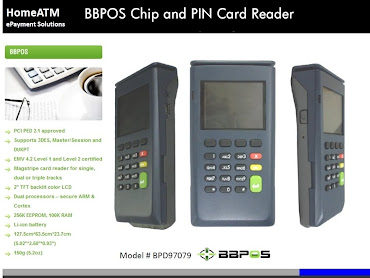New requirements for pre-authorized debits (PADs) mean changes for businesses using this payment option
OTTAWA, Sept. 16 /CNW Telbec/ - The Canadian Payments Association (CPA) has published new requirements for pre-authorized debits (PADs) to ensure appropriate information is disclosed to consumers and other parties using this option to pay for goods or services. As a result, all businesses using PADs to collect payments from their customers will need to make some changes to the forms or processes through which they obtain customers' authorization.
A PAD is a payment based on an agreement between a business and its customer through which the business obtains the customer's authorization to debit his or her bank account in accordance with specified terms. Requirements for these items to be processed through the clearing system are set out in the CPA's Rule H1 - Pre-authorized Debits. Recurring charges to credit cards are outside the scope of this framework.
On average, more than 2.3 million PADs were processed through the Canadian clearing system each business day during 2007.Mandatory Information Elements for Pre-authorized Debit AgreementsA key change in the new version of Rule H1 is the definition of mandatory elements to be included in the Payor's PAD Agreement - that is, the form or process through which the business or "payee" obtains the customer's authorization to debit his or her bank account. Among the mandatory elements are:
- information on how to cancel a PAD,
- the payee's contact information, and- a standard statement with regard to the consumer's rights of recourse in the event of a debit that does not follow the terms of the agreement or is not authorized.
All payees using PADs must update their forms or electronic processes to reflect these new requirements by February 28, 2010. Each payee must submit a copy of its proposed forms and/or electronic processes to its financial institution to confirm that they meet the new requirements. Payor's PAD Agreements in effect before that date are grandfathered to avoid potential disruption to both consumers and payees. As part of the transition, CPA's member financial institutions will be updating their contractual arrangements with corporate clients on whose behalf they enter PADs into the clearing system to incorporate their clients' new obligations as PAD payees.
More Flexible Framework for Electronic PAD Agreements
The new framework also provides more flexibility to establish Payor's PAD Agreements through electronic means such as over the telephone or the internet. Payees who wish to initiate PAD Agreements electronically must submit their proposed electronic forms or processes to their financialinstitution for review, including the proposed process to confirm the identity of the payor in the electronic environment. In addition, for all electronic Payor's PAD Agreements, the payee must send a written confirmation of all details to the payor in advance of the first PAD; the standard period is 15 days before the first PAD, which may be reduced by mutual agreement, but may not be waived
More information on the new requirements, including a copy of Rule H1, is available on the CPA's web site at www.cdnpay.ca.
The Canadian Payments Association (CPA), created by an Act of Parliament in 1980, operates Canada's national clearing and settlement systems; facilitates their interaction with other systems involved in the clearing and settlement of payments; and facilitates the development of new payment methods and technologies. It promotes the efficiency, safety and soundness of the clearing and settlement systems, taking into account the interests of users.Its current membership comprises virtually all of Canada's bank and non-bank deposit-taking financial institutions. In 2007, the CPA's systems cleared and settled transactions averaging $203 billion each business day.
For further information: Roger Dowdall, Vice-President, Communications and Education, Canadian Payments Association, (613) 238-4173, ext 3240









0 comments